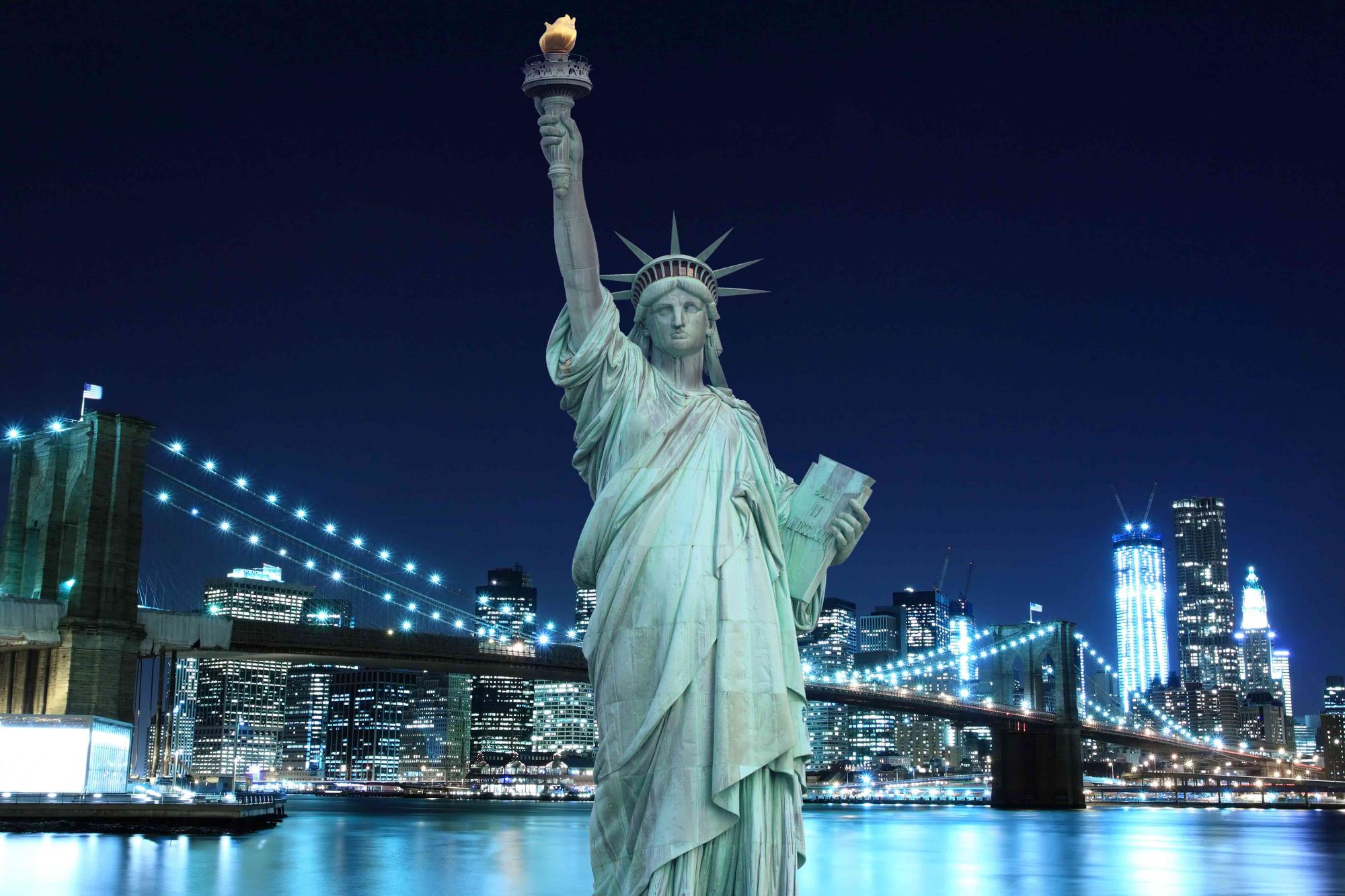Liberty.
Liberty is defined as the quality or state of being free, the power to do as one pleases, the freedom from physical restraint, and or the freedom from arbitrary or despotic control.

In 1865 Frenchman Édouard de Laboulaye proposed the idea of a monumental gift from the people of France to the people of the United States. An ardent supporter of America, Laboulaye desired to mark the Declaration of Independence as well as celebrate the long friendship between France and America. Further, the Frenchman was moved by the abolition of slavery in the U.S., which furthered America’s ideals of liberty and freedom.
The Lady Liberty was presented to America in a ceremony in Paris on July 4, 1884. In 1885 the completed statue, 151 feet 1 inch (46 meters) high and weighing 225 tons, was disassembled and shipped to New York City. The pedestal, designed by American architect Richard Morris Hunt and built within the walls of Fort Wood on Bedloe’s Island, was completed later. The statue, mounted on its pedestal, was dedicated by President Grover Cleveland on October 28, 1886.
Let’s take a moment to agree on the term Liberty defined as the quality or state of being free, the power to do as one pleases, the freedom from physical restraint, and or the freedom from arbitrary or despotic control.
Since 1776, our planet has transformed from a worldwide closed autocracy to ever-increasing liberty in the form of representative democracies. Peaking at more than half the world’s population in 2000, liberty has dipped a bit. But it is worth noting all the gains liberty had made in such a short time. Check out the graphic below from the University of Oxford. I will let the learned folks at Oxford explain their political categories.

Which political systems does the ‘Regimes of the World’ classification distinguish?
- In closed autocracies, citizens do not have the right to choose either the chief executive of the government or the legislature through multi-party elections.
- In electoral autocracies, citizens have the right to choose the chief executive and the legislature through multi-party elections; but they lack some freedoms, such as the freedoms of association or expression, that make the elections meaningful, free, and fair.
- In electoral democracies, citizens have the right to participate in meaningful, free and fair, and multi-party elections.
- In liberal democracies, citizens have further individual and minority rights, are equal before the law, and the actions of the executive are constrained by the legislative and the courts.
Unfortunately, our global political growth does not come without a few birth pains. Notice, for the first time since World War II, electoral autocracies have the largest slice of our planet’s population. This shift in political alignment away from democracies to electoral autocracy does not bode well for peace.
Let me tell you why. A notion called the Democratic Peace Theory.
Immanuel Kant (1724-1804) is generally considered one of the most profound and original philosophers in generations. He fostered ideas like, “always treat people as ends in themselves, never merely as a means to one’s own ends.” Kant famously argued that peace could emerge among states once they shared three features: representative democracy, adherence to international law and organizations, and advanced commercial integration.
The foundation of the Democratic Peace Theory was first articulated by Kant in his 1795 essay entitled “Perpetual Peace.” In his piece, Kant argued that nations with constitutional republic governments are less likely to go to war because doing so requires the consent of the people, who would actually be fighting the war.
The Democratic Peace Theory states that countries with liberal democratic forms of government are less likely to go to war with one another than those with other forms of government. President Woodrow Wilson, said in his 1917 World War I message to Congress stated that “The world must be made safe for democracy.”
Dependent on the ideologies of liberalism, such as civil liberties and political freedom, the Democratic Peace Theory holds that democracies are hesitant to go to war with other democratic countries. Proponents cite several reasons for the tendency of democratic states to maintain peace, including:
- The citizens of democracies hold sway over legislative decisions to declare war.
- In democracies, the voting public brings their elected leaders to account for human and financial war losses.
- When held publicly accountable, government leaders are likely to create diplomatic institutions for resolving international tensions.
- Democracies rarely view countries with similar policies and forms of government as hostile.
- Usually possessing more wealth than other states, democracies avoid war to preserve their resources.
Whether the Democratic Peace Theory is a suitable causal explanation for war and peace is an argument for another day. To date, the theory seems to explain the relative peace experienced since World War II as democracy spread through the ruins of colonialism.
Looking at liberty on a map below, we find gains from World War II in flux as the light blue counties wedged between the dark blue of liberal democracies and the orange of autocracies. Democracy’s rise has made us a more peaceful and stable world, however, the recent rise in autocracies portends a more troubled horizon. If we believe in the Democratic Peace Theory our future is likely to be less peaceful. More conflict.

Are you able to see the Ukraine conflict more clearly against the backdrop of our bipolar ideological world on the map above?
Liberty, in the form of liberal and electoral democracies, has made great strides since 1776. We have much to celebrate, but our work remains undone. Especially, when those electoral and closed autocracies (China, Russia, and others) cannot peacefully live inside the boundaries of their own sovereignty.
Until next time. Travel safe.

